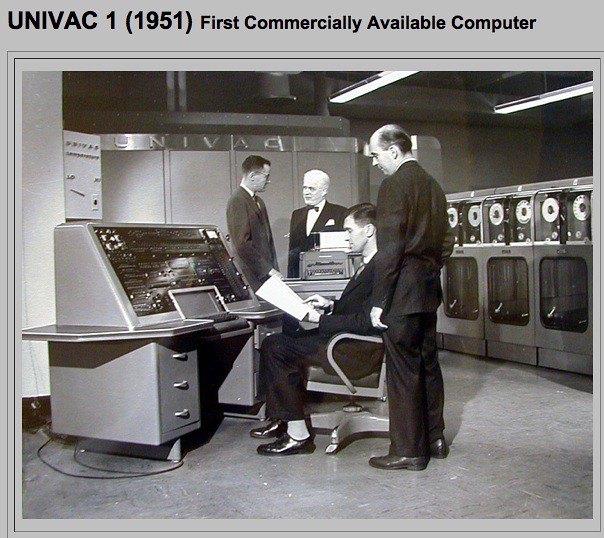Generation in computer terminology is a change in technology a computer was being used. Initially, the generation term was used to distinguish between varying hardware technologies. But now day’s generation includes both hardware and software, which together make up an entire computer system.
There are totally 5 computer generations known till date.
- 1st Generation (1942-55), Vacuum Tube Based
- 2nd Generation (1955-64), Transistor Based
- 3rd Generation (1964-75), Integrated Circuit Based
- 4th Generation (1975-89), VLSI Microprocessor Based
- 5th Generation (1989-Onwards), ULSI Microprocessor Based

1st Generation:-
1942-55 during this period the size of computer was too bulky and it is very difficult to operating. These computers were large in size and writing programs on them was difficult. This computer required high electric power as well as it was very costly.
Some computers of this generation were:-
ENIAC, EDVAC, UNIVAC, IBM-701, IBM-650.
- Feature:-
- They were faster calculating device of their time.
- It was too bulky; therefore it required large room space for installation.
- They contained thousands of Vacuum tubes.
- Each vacuum tube had a filament and consumes about half of volt of power.
- They required life-time maintenance because filament is born out.
- They were can’t be easy for programming and use.
- It was very costly.
- They were can’t be used for commercial purpose.
- They emitted large amount of heat, therefore it required A.C room.
2nd Generation:-
During this time 1955-64, Robbort Noyce developed 1st electronic device that is called Transistor, in U.S.A in 1947. Transistors are smaller than electric tubes and have higher operating speed. It is in the 2nd Generation that the concept of C.P.U, memory, programming language and input- output units were developed.
Some computers of this generation were:-
IBM 1620, IBM 7094, CDC 1604, CDC 3600, UNIVAC 1108
- Feature:-
- They were more powerful than the 1st Generation.
- They emitted less amount of heat.
- Low costly than 1st Generation.
- It required proper A.C room.
- It consumes much less power than the 1st Generation.
- It is comfortable easy to handle as compare to 1st Generation.
3rd Generation:-
IC’s (Integrated Circuits) used in 3rd Generation. It is the combination of several, electric component like Transistor, Capacitor and Resistor on a single surface.
SSI (Small Scale Integration), it is the combination of 10-20 electronic components in a single Silicon Chip.
MSI (Medium Scale Integration), it is the combination of 100 electronic components in a single Silicon Chip.
Some computers of this generation were:-
IBM 360, Honeywell 6000, PDP (Personal Data Processor), IBM 370/168, TDC 316.
- Feature:-
- The Mainframe computer on 3rd Generation is more powerful than 2nd Generation.
- It required much less power compare to 2nd Generation.
- It also requires proper A.C room, but the heat emotion was much less compare to 2nd Generation.
- They had large primary and secondary storage device.
- During this period the time sharing “O.S” developed.
4th Generation:-
LSI (Large Scale Integration), it is the combination of 30 thousand electronic components in a single Silicon Chip.
VLSI (Very Large Scale Integration), it is the combination of 1 million electronic components in a single Silicon Chip.
Some computers of this generation were:-
DEC 10, STAR 1000, PDP 11, CRAY-1 (Super Computer), CRAY-X-MP (Super Computer)
- Feature:-
- They were more powerful than 3rd Generation of Computer.
- It consumes much less power than 3rd Generation.
- They emitted much less than 3rd Generation.
- It was totally general purpose machine.
- The size of 4th Generation P.C was much less compare to 3rd Generation.
- They support all High Level Language there time.
- Its GUI (Graphic User Interface) helps new user to learn computer.
5th Generation:-
ULSI (Ultra Large Scale Integration), it is the combination of 10 million electronic components in a single Silicon Chip.
Some computers of this generation were:-
Desktop, Laptop, Note book, Ultra book, Chrome book.
- Feature:-
- In 5th Generation Micro Processor on is use.
- Every 18th Month increase Processor speed and Memory Double.
- These computers are use in scientific job & Commercial Purpose.
- It is very easy to move from one place to another.
- It doesn’t required A.C room